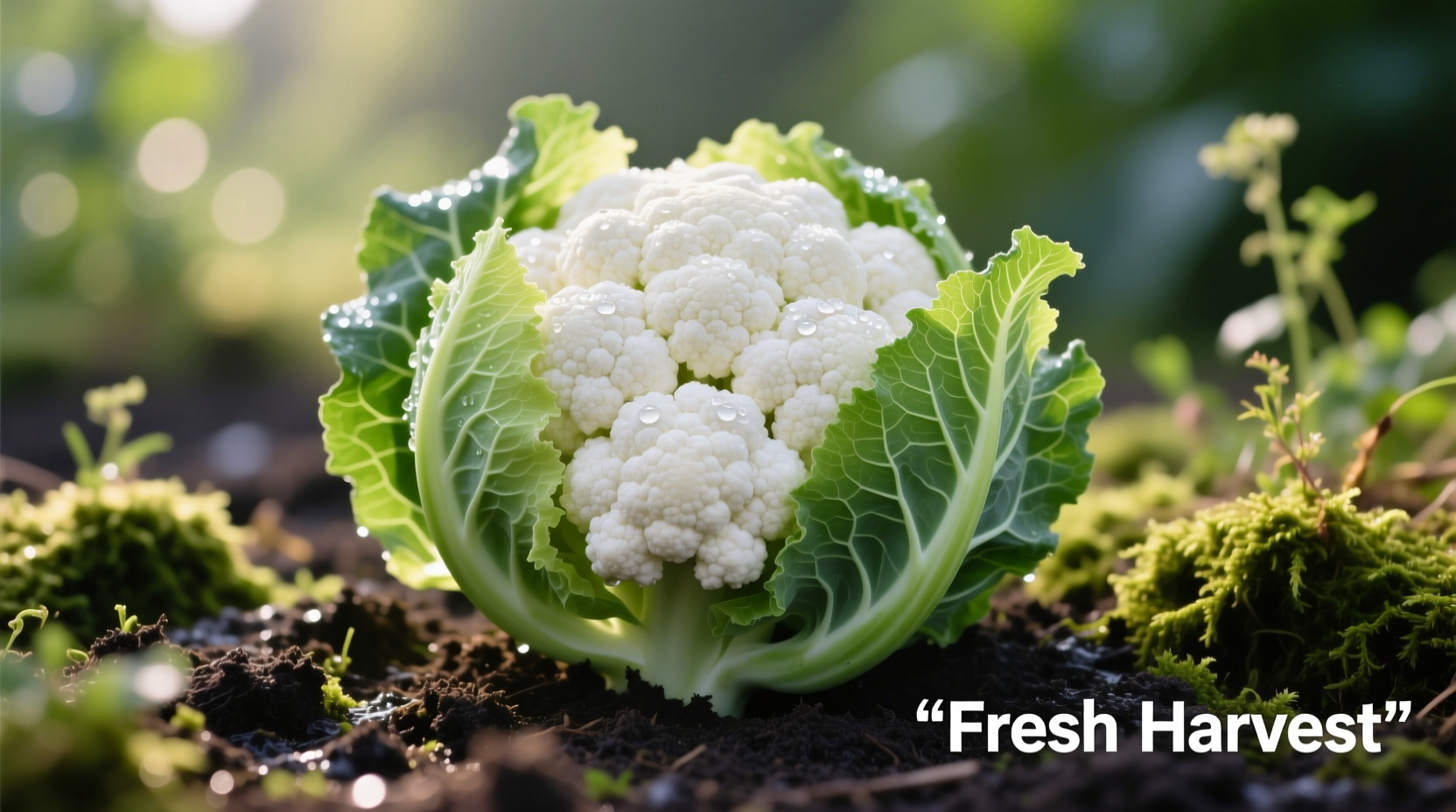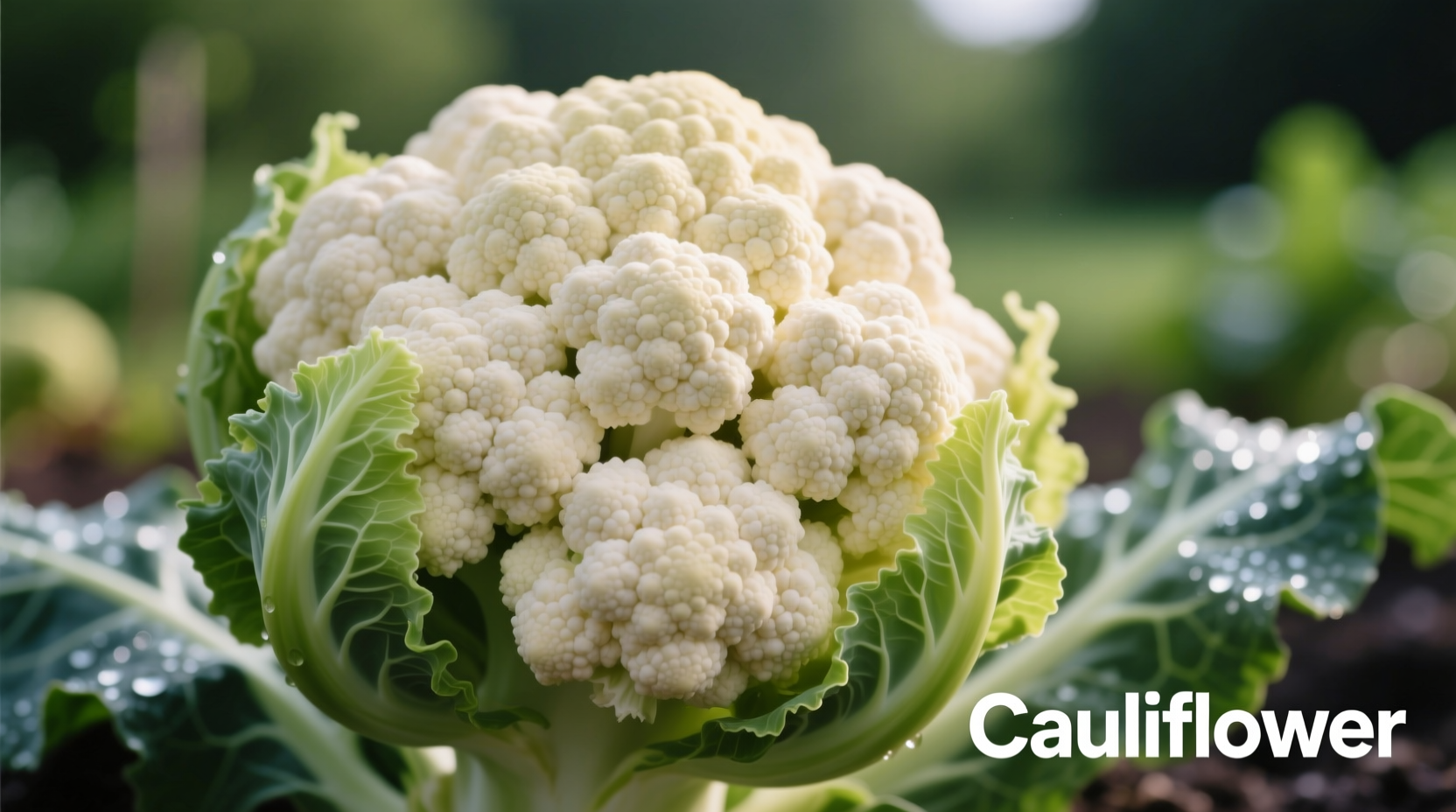Understanding Cauliflower: More Than Just White Veggies
When you ask what is the cauliflower, you're exploring one of nature's most versatile vegetables with a fascinating botanical story. Unlike what many assume, cauliflower isn't naturally white—it develops its characteristic pale color because the leaves shield the developing head from sunlight, preventing chlorophyll production. This protective leaf structure, called blanching, is what gives cauliflower its distinctive appearance.
Botanically speaking, cauliflower belongs to the Brassica oleracea species, sharing this classification with broccoli, kale, cabbage, and Brussels sprouts. What makes cauliflower unique among its cousins is its tightly clustered inflorescence meristem—the edible portion we consume—which consists of hundreds of immature flower buds packed together.
From Wild Mustard to Kitchen Staple: The Evolutionary Journey
Cauliflower's story begins thousands of years ago with wild mustard plants in the Mediterranean region. Through selective breeding, ancient cultivators transformed these plants into the vegetable we recognize today. Understanding what is cauliflower requires appreciating its remarkable evolutionary path:
- 6th Century BCE: Earliest references to cauliflower-like vegetables in ancient Greek and Roman texts
- 600-800 CE: Development of early cauliflower varieties in the Middle East
- 15th-16th Century: Introduction to Europe through trade routes, becoming popular in France and Italy
- 19th Century: Development of modern varieties through selective breeding
- 20th Century: Global expansion of cultivation and development of colored varieties (orange, purple, green)
Nutritional Powerhouse: What Makes Cauliflower Special
When exploring what is cauliflower from a nutritional perspective, you'll discover why health experts consistently recommend this vegetable. A single cup (100g) of raw cauliflower contains:
| Nutrient | Cauliflower (per 100g) | Broccoli (per 100g) | Daily Value % |
|---|---|---|---|
| Calories | 25 | 34 | 1% |
| Vitamin C | 48.2mg | 89.2mg | 77% |
| Vitamin K | 15.5μg | 101.6μg | 19% |
| Fiber | 2g | 2.6g | 8% |
| Folate | 57μg | 63μg | 14% |
This nutritional comparison, sourced from the USDA FoodData Central, shows how cauliflower stacks up against its close relative broccoli. While broccoli generally contains higher levels of certain nutrients, cauliflower offers unique benefits that make it valuable in any diet.
Health Benefits Backed by Science
Research published in the Journal of Agricultural and Food Chemistry confirms that cauliflower contains glucosinolates, sulfur-containing compounds that transform into cancer-fighting isothiocyanates when chopped or chewed. These compounds have demonstrated protective effects against several types of cancer in numerous studies.
Additionally, cauliflower's high choline content (44mg per cup) supports brain health and cognitive function. According to the National Institutes of Health Office of Dietary Supplements, choline plays a vital role in neurotransmitter synthesis and cell membrane integrity.

Culinary Versatility: Beyond the Basics
Understanding what is cauliflower isn't complete without exploring its incredible culinary flexibility. Chefs worldwide utilize cauliflower in innovative ways:
- Rice substitute: Pulse raw cauliflower in a food processor for a low-carb alternative to rice
- Pizza crust: Combine riced cauliflower with cheese and egg for a gluten-free base
- Steak alternative: Thick slices roasted at high heat develop a meaty texture
- Creamy sauces: Blended cooked cauliflower creates rich, dairy-free sauces
Professional chefs recommend roasting cauliflower at 425°F (220°C) to maximize its natural sweetness through caramelization. The Maillard reaction that occurs during roasting transforms the vegetable's flavor profile, creating complex umami notes that enhance any dish.
Growing Your Own: What Is Cauliflower Cultivation Like?
For gardeners curious about what is cauliflower from a cultivation perspective, this vegetable presents unique challenges. Unlike many vegetables, cauliflower requires consistent temperatures (60-70°F or 15-21°C) and steady moisture to develop properly. Temperature fluctuations can cause buttoning (small, premature heads) or riceyness (loose, grainy texture).
The University of California Agriculture and Natural Resources notes that successful cauliflower cultivation depends on proper blanching—tying the outer leaves over the developing head to protect it from sunlight. This practice maintains the white color and delicate flavor that distinguishes cauliflower from other brassicas.











 浙公网安备
33010002000092号
浙公网安备
33010002000092号 浙B2-20120091-4
浙B2-20120091-4